Worm farms are a great way to speed up your composting, and the best worm farms come with water traps so you can use kitchen scraps to make fertilisers for the garden within days.
You can build your own worm farms, but making them perfect is actually pretty challenging, so buying worm farms is a good place to start, and means you can get started straight away.
In this ultimate guide to worm farms we’ll explain how they work, why worm farms are good for the garden, and how to get started with your new worm farm, as well as a handy set of worm farm reviews at the end of the article so you know what you’re looking for.
More...
Top Pick

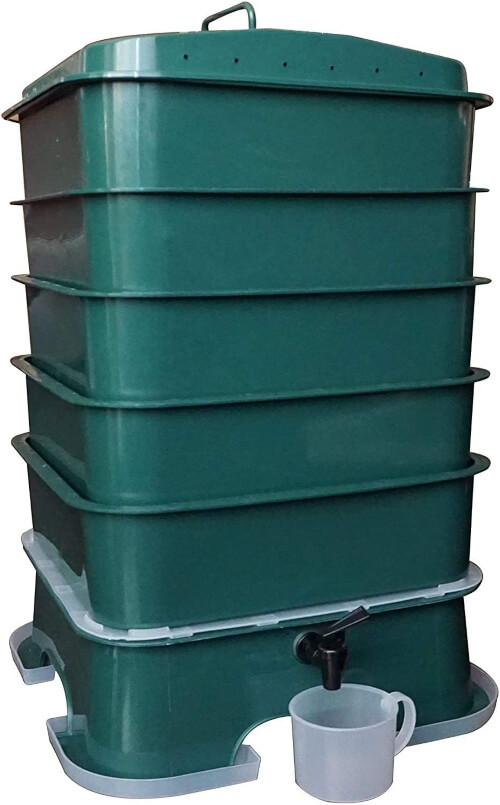
Best Value


Best Worm Farms for 2025
Product | Our Rating | Price | |
|---|---|---|---|
1. VermiHut Plus 5-Tray Worm Compost Bin | 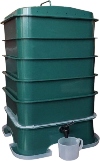 |  | |
2. Worm Factory Basic Black 3 Tray Worm Composter | 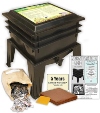 |  | |
3. Teemway 4-Tray Worm Factory Farm | 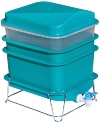 | ||
4. Urban Worm Bag Worm Composting Bin |  | ||
5. Educational Insights See-Through Compost Container |  |
What are Worm Farms?
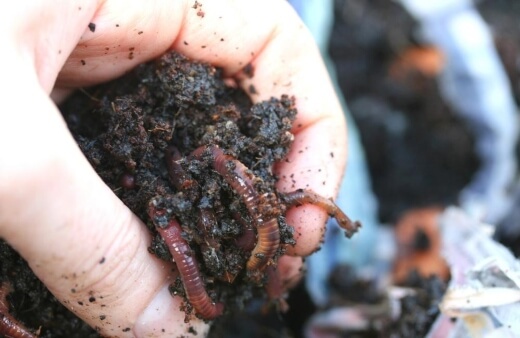
A worm farm is a compost system that uses the natural habits of worms to decompose food waste quickly, efficiently, and without having to dedicate your entire yard to a three-year, three-bin compost system.
If you ever heard gardeners talking about vermiculture (not to be confused with vermiculite, but both are equally useful), they mean worm farming, and frankly, they’re showing off.
Worm farms are usually supplied with worms too, so unlike back in the day, you don’t have to go around the garden digging them up to get going, all you need is a little soil, some fresh kitchen scraps and a good spot in the garden.
What do Worm Farms do?
First, let’s talk about worm castings, or vermicompost. Worm castings are the little swirls of mud you see on your lawns, and on beaches, and are basically just worm poop.
As the worms dig through your food waste, they eat it, and churn it up into almost perfect compost, with balanced nutrients and better water retention than traditional compost.
While you can buy worm castings, Bunnings do a great range, you can easily create mountains of your own black gold with your own worm farm, and fertilise your entire garden with it.
By churning through your veggies, the worms promote decomposition and as the liquid waste is useless to the worms, goodness, it creates an amazing liquid fertiliser to sue on tomatoes, and squashes.
Obviously, the exact nutrient levels coming out of your worm farm depend on what you put in, but from an average kitchen is usually a pretty perfect NPK (Nitrogen, Phosphorous, Potassium) mix for the vegetable garden.
The best stuff to put in is banana skins, crushed egg shells, cabbage leaves, old tomatoes and potato peel.
Setting Up a Worm Farm
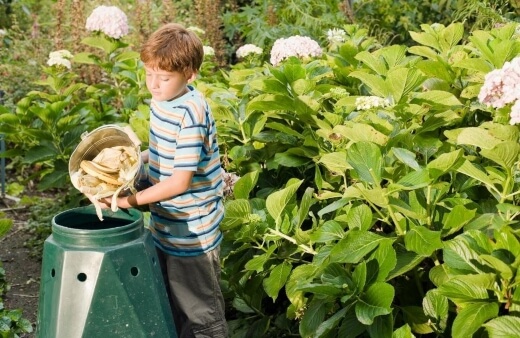
This guide is for those of you wanting to start from a bought worm farm, but we might talk about building your own worm farm one day. For now though, you’ll need:
- Enough newspaper to cover a few layers at the bottom of your worm farm
- A bucket of garden soil (equal to the volume of shredded paper)
- Food scraps (nothing fatty or cooked, stick to veggies to be safe)
- Worms
First, add the shredded paper into the bottom of your bin and slightly dampen it, this creates a layer that will hold water, but also let excess moisture drain away.


Get Your Free Guide:
Master Growing Australian Natives eBook
A Must Have Complete Guide for Every Australian Garden
Get Your Free Guide:
Master Growing Australian Natives eBook
A Must Have Complete Guide for Every Australian Garden
Next, you’ll want to add in the soil which gives the worms somewhere to live straight away. On top of that, add your kitchen scraps, and then mix it all together and add your worms. That’s it!
Keep layering up by adding food scraps once a week, and every time, cover them with newspaper (this stops flies, and helps regulate moisture).
Worms for Worm Farms

Ideally, you want to choose a worm farm that is supplied with red wigglers, or redworms. They act fastest on the soil and can eat up to half their own weight in a day.
Once your compost is established that means that a healthy worm farm can compost fresh kitchen scraps within a single week. Compared with normal compost, that’s an improvement of about 5200%.
You can use any worm for this theory, but if you ask any worm farmer, it’s red wigglers every time.
How to Manage a Worm Farm

Moisture Levels for Worm Farms
If you reach into your worm farm and your hand comes out muddy, you need to start regulating the moisture as it should be moist, but not wet. Equally, if it’s too dry, try to block up some of the drainage, or stop using the tap quite as often.
Worms need some moisture to survive, but too little leads to oxygen starvation in the middle of your worm farm. They do a great job of tunnelling and oxygenating the soil.
While it might seem sensible to add just kitchen waste to your worm farm, it needs some moisture management. Adding dry materials to help retain the moisture from rotting veg is a really cheap way to manage moisture in your worm farms.
For every handful of kitchen scraps, add another handful of shredded newspaper or cardboard to pile. Dry leaves are great in autumn too, and if you have any dry grass clippings or dry garden waste lying around it’s better for the soil than newspaper.
How to Feed a Worm Farm
You should feed your worm farm every week. There’s no problem with feeding it every day, but your worms aren’t likely to be able to keep up with it. By storing your food scraps in a scrap bin in the kitchen, you can just tip that into the worm farm once a week, then add newspaper over the top.
By adding paper, you create a barrier against flies that might be attracted to the rotting food, and it helps to keep smells down which reduces any chance of vermin (but vermin are unlikely as long as you stick to vegetable scraps and don’t include any fatty or cooked foods).
How to Clean a Worm Farm
You should never completely clean out a worm farm if you intend to keep using it, instead, harvest the compost you need, but leave a quarter of the compost in place.
This compost has loads of worms in it, and if you get rid of it all, your worms will be spread all over the garden with no way of getting back into the worm tower.
It’s completely ok to take worms out of the worm bag and spread them around the garden as they are great at improving the soil elsewhere, and help to mix the new compost down into the soil, so all you need to do is mulch.
(Check our guide on the Best Types of Mulch for the Garden | When and How to Use it.)
Buyer’s Guide to Worm Farms
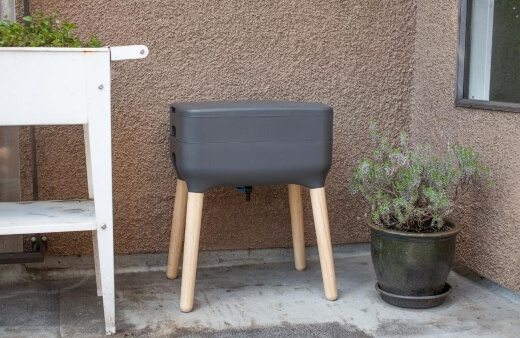
So, hopefully you’ve got a pretty good idea of how to set up your worm farm, so let’s start thinking about which farm you want to buy, whether it’s a new project to get your gardening year started, or as a way to reduce your food waste.
I love worm farms for that reason, they help reduce waste, and landfill massively. If we were all keeping worm farms and composting, we’d reduce our kitchen waste by around half every year. Imagine the impact that would have on the planet! We can only dream.
Different Types of Worm Farm
There are three main types of worm farm, and there are some pretty good models of each, but for me, a full worm farm compost system is the best use of space, and the most efficient system, as well as being easy to use.
Also, for kids there are some brilliant science sets you can get to help them understand the process better, and get excited about biology and the science of gardening.
Worm Tower

Worm towers are the most common worm farms. They work by letting you control layering, and most worm towers online are adaptable and customizable too.
They almost all come with a fertiliser spigot too, so you can just turn a tap to access the ‘worm tea’. The biggest advantage of worm towers is that when the bottom layer is ready you simply remove it, and use it.
The layers above lower down and a few months later you’ll be using them for compost too.
Worm Bags

Worm bags take a lot of work out of vermiculture. Because they are breathable, they let oxygen circulate inside the worm farm, which means you can add more food at a time to the bin. They tend to produce more traditional compost, but work slower than towers.
Worm Farm Compost Bin
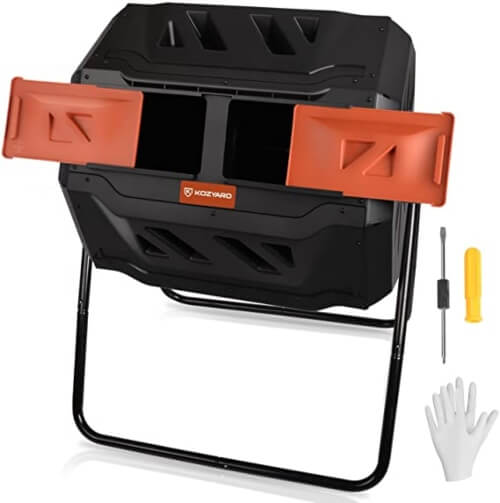
There’s only one full compost system in our worm farm reviews below, because they’re harder to come by, and require a little installation than towers.
Their biggest benefit is speed, their subterranean operation means you’re using the worms in your garden as well as the red wigglers, so you get a more rounded compost that matches your garden soil better too.
The downside? Access. The underground system takes a little installation, and digging, to prepare, and to access your compost, you need to dig through everything else.
(Here is our review on the best compost bins available online.)
What to Look for in a Worm Farm
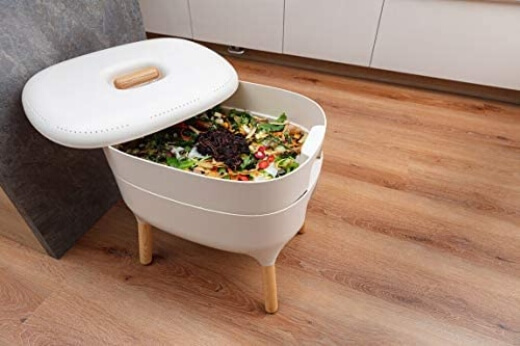
There is one really easy way to say whether a worm farm is effective: does it beat the bucket test? You can create a really simple DIY worm farm, by filling a bucket with paper and veg scraps, and turning upside-down on your soil.
Leave it for four months, and by the time you lift it, you’ll know the rate your garden can naturally compost food without bins, worm farms or any other trick.
If a worm farm can beat that rate, it’s a good one.
Worm Farm Reviews for 2025
1. VermiHut Plus 5-Tray Worm Compost Bin

VermiHut’s composter answers problems I never knew worm farms had. Their clever ant trapper at the base stops ants crawling into the farm and carrying off the kitchen scraps before they can be composted.
Thanks to the perforated layers and coir included with the package it’s great for compost aeration too.
Pros
Cons
2. Worm Factory Basic Black 3 Tray Worm Composter

I really like worm factory. The basic model is supplied with three trays, which is enough for a month of kitchen waste and it works incredibly quickly.
The easy stack system makes it ideal for family use, and compost can be used on the bottom shelf as soon as the top shelf goes on. For something that doesn’t cost the earth, it does a great job of helping it.
Pros
Cons
3. Teemway 4-Tray Worm Factory Farm

The Teemway is a good budget option worm tower, but it’s not as well aerated as others on review here. The biggest benefit here is for small spaces.
Small gardens would benefit in a big way from a compact wormery like this one, which is still a pretty decent composter. It doesn’t come with any added extras, but for a basic worm tower it’s still an effective way to compost all year round.
Pros
Cons
4. Urban Worm Bag Worm Composting Bin
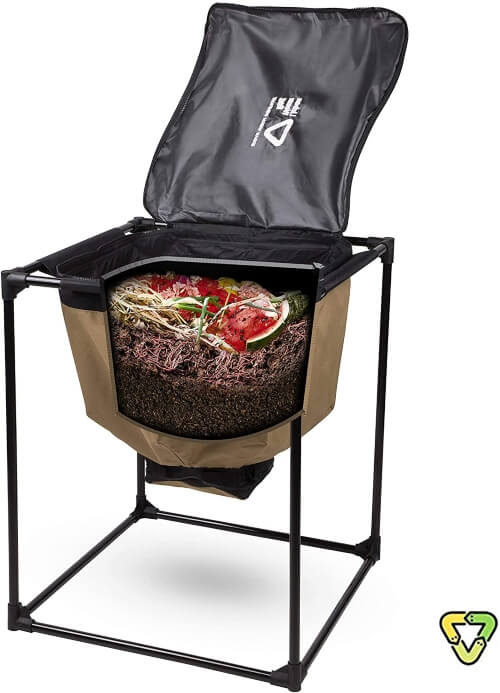
The Urban Worm Bag is made from moisture-controlled fabric so pretty much guarantees your food won't rot, or smell. Remember wormeries aren’t meant to rot food, they’re meant to break it down. It’s a cleaner, quicker process than composting.
While the Urban Worm Bag is slower to break down veggies than worm towers, it creates a more rounded compost and higher quality worm castings as a result.
Pros
Cons
5. Educational Insights See-Through Compost Container
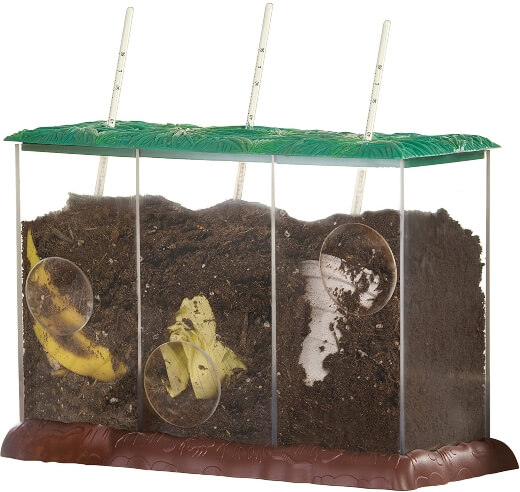
Before you tell me I’ve made a mistake, consider this: A worm farm is a system that helps the earth, right? It’s a system of composting that is capable of getting kids excited about gardening, right?
So, yes, this is a tiny little glass box with holes in, but it’s also a great way to teach kids about decomposition, and how the garden actually works.
You might not get masses of compost from it, but for a worthwhile experiment, you’ll probably be rewarded with at least enough compost to refresh one of your houseplant.
Pros
Cons
Best Worm Farms Australia
Aussie Green Thumb Top Pick for 2025


VermiHut Plus 5-Tray Worm Compost Bin's simple stacking system, and clever pest control measures make it my top pick by a long way. It’s more expensive than other worm tower systems, but it justifies that with better aeration, higher capacity, and a lot of clever features.
The VermiHut is genuinely built for purpose by people passionate about worm farming, and because of that, it comes with everything you need to get started, making it incredibly easy to start your own worm farm, harvest your own worm casing, and make your own worm tea fertilisers for the garden.
The no-nonsense stacking system also makes it easy to rotate your wormery, so you always have easy access to your oldest worm compost.
Best Value Worm Farm


The worm factory has always been one of the best worm farm manufacturers, producing reliable worm farms for years now. Their simple design has barely changed since they launched because, simply put, it works, and those savings from development (or lack of) get passed on to you as it's still one of the cheapest worm farms you can buy.
Their mission is reducing food waste, and improving soil, and clearly the way they do that is to make worm farming affordable for every home.
Worm Farm Frequently Asked Questions
How does a worm farm work?
Worm farms work by pure worm power. Worms eat, digest and excrete kitchen scraps, newspaper and cardboard to produce near perfect garden compost in the form of worm castings.
Most worm farms are sold as tower systems, so as you build layers of food waste, you use the oldest layer as compost.
Is a worm farm better than a compost bin?
There are arguments in favour of both, but worm farms work faster, and produce more moisture-retentive compost than traditional compost bins. I like to keep a mixture of both, but the convenience of a worm farm can’t be beaten.
What are worm castings?
Worm castings are the small curls of earth you see on your soil, or on sand on the beach. They are produced by worms as they churn up the earth, and usually deposited on the soil surface when they process surface lying leaves. In worm farms, this nutrient rich material is perfect for fertilising gardens.
How fast do worm farms work?
Most worm farms produce worm castings and compost after around 2 months, but others can take up to 4 months to completely process your kitchen waste into usable compost for the garden.
There are some that claim to compost within 1-2 weeks, but these often incorporate hot bins, or in-ground technologies to speed up the process.
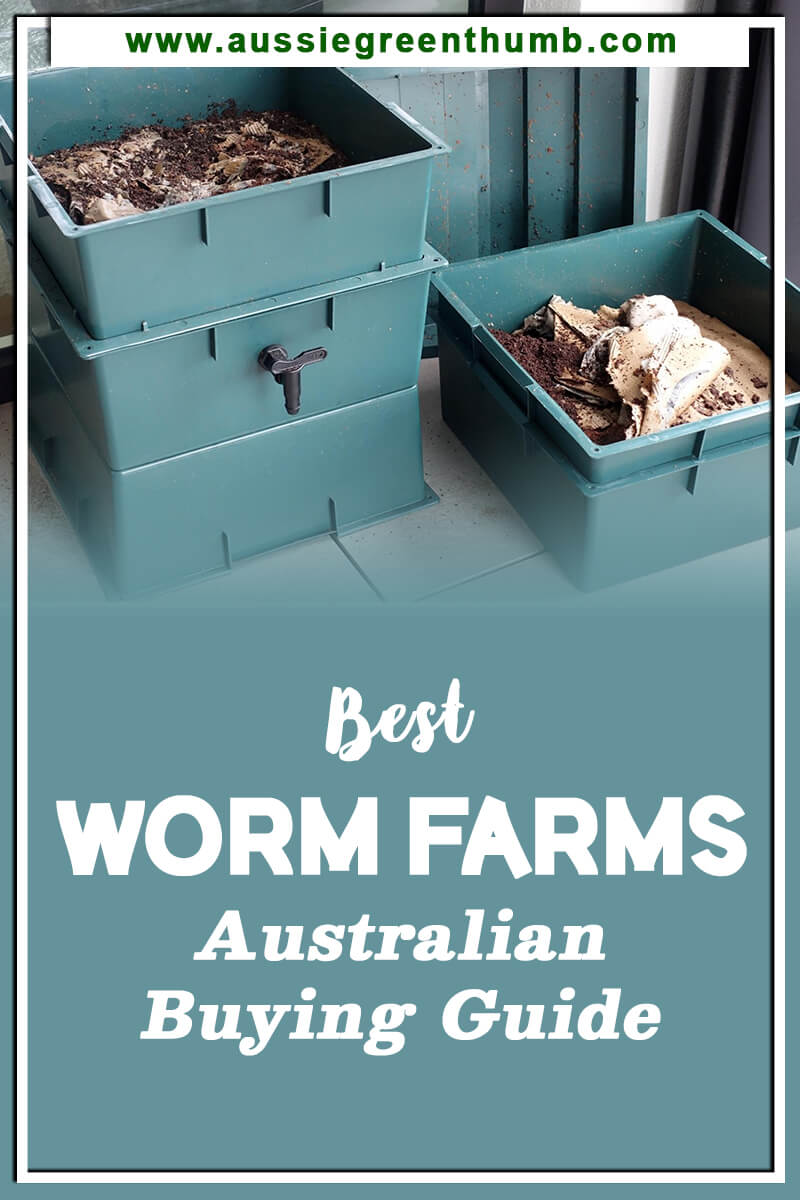
Wrapping Up Our Worm Farms Guide
Worm farms are a brilliant way to speed up your compost, and generate more water retentive mulches for the garden. For anyone going out of their way to buy worm castings from the garden centre, why not make your own? You’ll save money, and have fun in the process.
I love worm farms, and one of my earliest memories was a worm farm at a local visitor centre where I just stared into the glass sides for hours at a time.
They still take me back to that childish entrancement today, so if you’ve got kids, or you’re just a big kid, worm farms are a must have in the garden.
Published on January 6, 2022 by Gary Clarke
Last Updated on December 23, 2024




